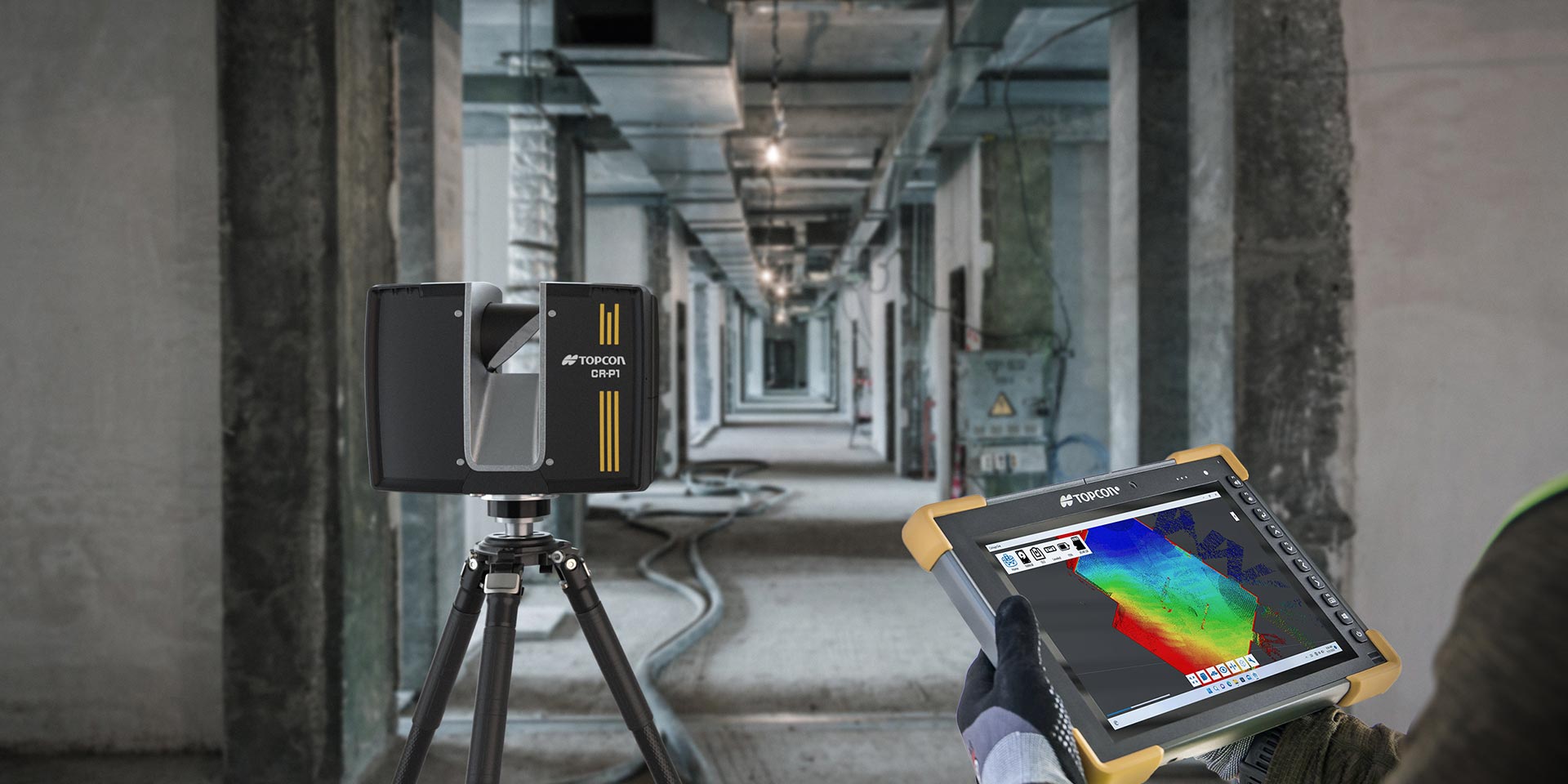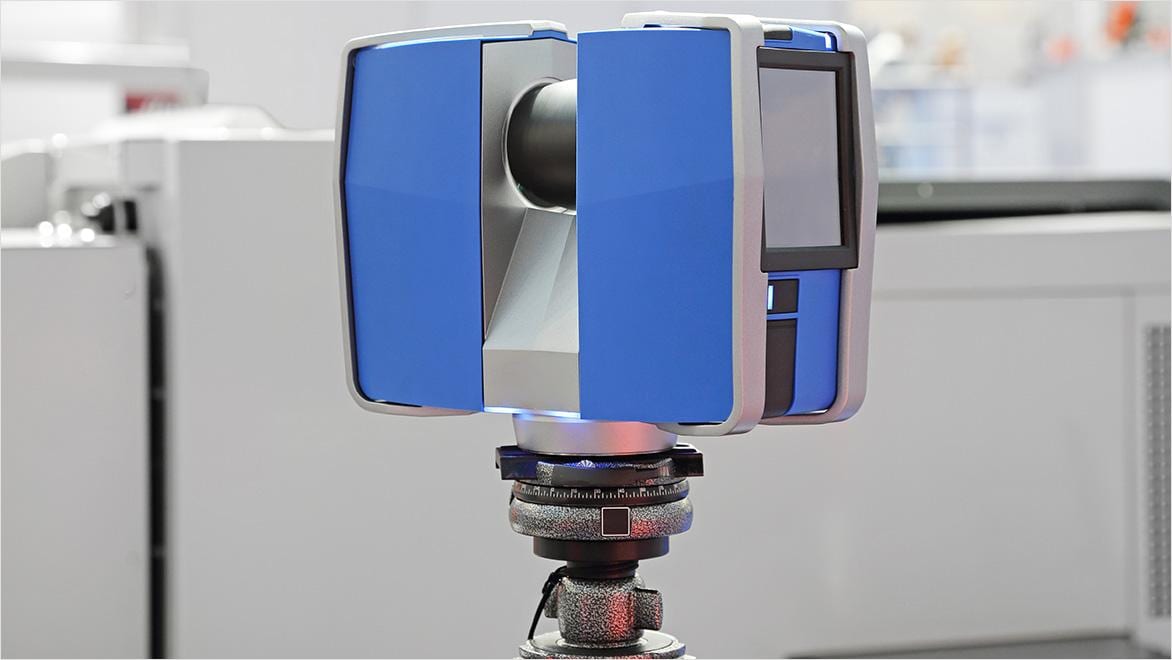Why 3D Scanning Is Shaping the Design World
Wiki Article
Enhancing Production Processes: The Influence of 3D Laser Scanning on Quality Control
3D laser scanning innovation is changing quality assurance in manufacturing. By offering exact dimensions and high-resolution data, it enables producers to identify discrepancies from specifications easily. This advancement not only improves inspection procedures but likewise enhances functional efficiency. 3D Scanning. The implementation of this innovation comes with its own set of difficulties. Exploring these aspects exposes the more comprehensive implications for industries and the future landscape of production
Understanding 3D Laser Scanning Technology
Although 3D laser scanning technology has advanced significantly recently, its essential concept remains uncomplicated: recording the precise geometry of objects utilizing laser beams. This technology uses laser light to measure distances in between the scanner and various factors on an item's surface. The data accumulated is then processed to develop an in-depth 3D design, accurately reflecting the dimensions and contours of the checked object.Usually, 3D laser scanners can be categorized right into two major types: get in touch with and non-contact scanners. Call scanners literally touch the challenge gather dimensions, whereas non-contact scanners use laser beams to capture data from a range. The flexibility of this innovation allows its application throughout different sectors, including production, design, and construction. Its ability to generate high-resolution designs assists in top quality control, reverse design, and quick prototyping, inevitably boosting layout precision and efficiency in manufacturing processes.
Benefits of 3D Laser Scanning in Manufacturing
As manufacturers seek to boost efficiency and precision in their procedures, the benefits of 3D laser scanning have actually ended up being significantly obvious. This innovative innovation enables fast and extremely precise dimensions of complicated geometries, significantly decreasing the time required for quality checks. By catching thorough data, makers can identify disparities early in the production procedure, therefore minimizing waste and remodel prices.Additionally, 3D laser scanning facilitates much better design recognition, making it possible for engineers to contrast as-built problems with initial specifications. This ability assures that any deviations are quickly dealt with, enhancing overall item high quality. On top of that, the modern technology sustains the development of electronic twins, which can be utilized for simulations and process optimizations. Because of this, producers not just enhance their operational efficiency however additionally boost their affordable benefit out there. Overall, the combination of 3D laser scanning stands for a transformative action toward accomplishing higher requirements in manufacturing quality control.
Combination of 3D Laser Scanning Into High Quality Control
Integrating 3D laser scanning right into quality assurance procedures boosts the accuracy and efficiency of evaluations throughout manufacturing. This technology allows suppliers to catch detailed, high-resolution information of parts and assemblies, permitting for precise measurements and contrasts versus style specifications. By using 3D laser scanning, organizations can determine discrepancies from tolerances much more successfully, which is important for keeping item honesty.
Real-World Applications and Case Studies
Real-world applications of 3D laser scanning in producing demonstrate its transformative influence throughout different markets. Aerospace firms utilize this modern technology to perform exact evaluations of parts, guaranteeing they meet stringent safety and security criteria. A significant case involved a leading aircraft maker that utilized 3D laser scanning to streamline its quality assurance procedures, considerably decreasing assessment times and errors.In the vehicle field, manufacturers have actually executed laser scanning to produce digital twins of their vehicles, allowing real-time changes during manufacturing. One automotive company reported a 30% decrease in rework prices after integrating this modern technology into their assembly lines.
In the consumer items sector, firms are making use of 3D laser scanning for rapid prototyping, enabling for quicker versions and improved product designs. These applications show how 3D laser scanning not just boosts precision however also improves effectiveness and innovation throughout numerous manufacturing domains.
Conquering Obstacles in Implementation
Implementing 3D laser scanning in producing presents several obstacles that companies need to browse to fully understand its advantages. One considerable difficulty is the preliminary expense of equipment and software, which can hinder firms from embracing this innovation. Additionally, incorporating 3D laser scanning into existing workflows needs overcoming resistance to alter amongst employees, requiring extensive training programs to guarantee efficiency. Data management also postures a difficulty, as the high volume of information produced by 3D scanning should be successfully refined and assessed to obtain workable understandings. In addition, compatibility issues with heritage systems might prevent smooth combination, demanding prospective look these up upgrades or alterations. Attending to these obstacles is crucial for suppliers aiming to enhance quality control and maximize production procedures. By establishing clear techniques for training, financial investment, and data administration, companies can reduce these barriers and launch the transformative capacity of 3D laser scanning in their operations.Future Patterns in 3D Laser Scanning for Production
As producing proceeds to develop, the combination of 3D laser scanning with enhanced automation is anticipated to transform production processes. Boosted data analytics will play a crucial duty in improving and optimizing process quality assurance. These fads highlight the potential for higher performance and precision in making environments.
Increased Automation Integration
Although the integration of automation in manufacturing has actually been progressive, the future of 3D laser scanning is poised to increase this fad significantly. As making procedures become progressively complex, the demand for precise, real-time measurements expands. 3D laser scanning technology uses automated information capture, minimizing labor expenses and decreasing human mistake. This assimilation enables producers to improve top quality control procedures, making it possible for rapid detection of deviations in manufacturing. Furthermore, the alignment of 3D laser scanning with robotics and automated systems helps with smooth procedures, improving general performance. As suppliers take on these advanced technologies, they can expect enhanced accuracy and efficiency, placing themselves competitively in a quickly advancing market. The synergy between automation and 3D laser scanning marks a considerable jump forward in making advancement.Improved Information Analytics
The assimilation of automation has paved the means for advancements in information analytics within the domain of 3D laser scanning. Suppliers are increasingly leveraging innovative algorithms and device discovering techniques to analyze large datasets created by laser scans. This enhanced information analytics capability allows for real-time surveillance of producing procedures, allowing the recognition of issues and inconsistencies more effectively than standard techniques. Anticipating analytics can foresee possible concerns, substantially lowering advice downtime and boosting overall efficiency. The capability to visualize information in three dimensions supplies deeper insights right into manufacturing process, fostering far better decision-making. As 3D laser scanning modern technology remains to advance, the function of data analytics will certainly come to be progressively essential in driving technology and keeping affordable advantage in production.Frequently Asked Concerns
What Industries Advantage one of the most From 3D Laser Scanning?
The sectors that profit most from 3D laser scanning include production, construction, aerospace, automotive, and healthcare. These industries utilize the modern technology for precision measurements, top quality assurance, and efficient layout procedures, substantially improving overall functional performance.How Does 3D Laser Scanning Contrast to Traditional Measurement Techniques?
3D laser scanning supplies higher precision and rate compared to standard measurement methods. It records thorough geometries rapidly, reducing human mistake and assisting in much better evaluation, which inevitably enhances general high quality control in different sectors.What Is the Cost of Executing 3D Laser Scanning Modern Technology?
The cost of implementing 3D laser scanning innovation varies substantially, generally ranging from $10,000 to $100,000, depending upon software program, training, and devices. Organizations needs to evaluate these expenditures against potential efficiency and high quality renovations.Exist Certain Software Program Needs for 3D Laser Scanning?
Yes, 3D laser scanning calls for particular software program, consisting of information processing and hop over to these guys modeling applications. Typical choices include CAD software, point cloud handling devices, and specialized applications that facilitate the integration and analysis of scanned data for ideal results.For how long Does a Regular 3D Laser Scanning Process Take?
A common 3D laser scanning procedure can take anywhere from a couple of minutes to a number of hours, depending on aspects like the dimension of the things, complexity of the setting, and required degree of information for accuracy.3D laser scanning modern technology is transforming top quality control in manufacturing. 3D laser scanning modern technology has progressed considerably in current years, its basic principle remains uncomplicated: catching the accurate geometry of things making use of laser light beams. Incorporating 3D laser scanning into top quality control processes boosts the accuracy and efficiency of evaluations throughout manufacturing (3D Scanning). 3D laser scanning innovation uses automated information capture, minimizing labor costs and minimizing human error. The expense of applying 3D laser scanning modern technology differs substantially, generally ranging from $10,000 to $100,000, depending on software, training, and equipment
Report this wiki page